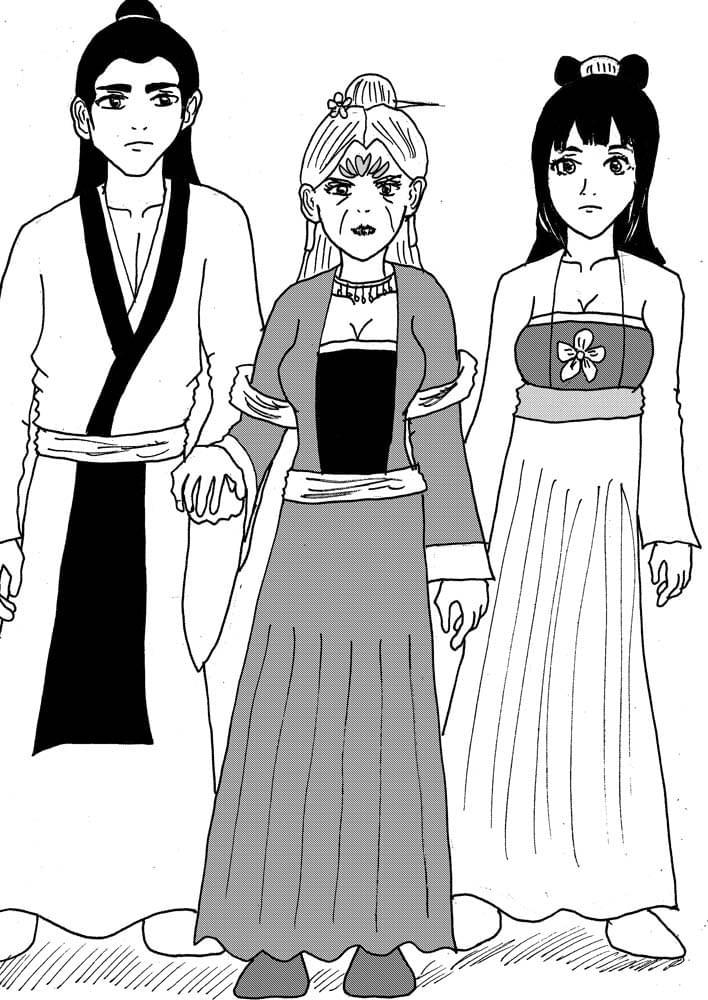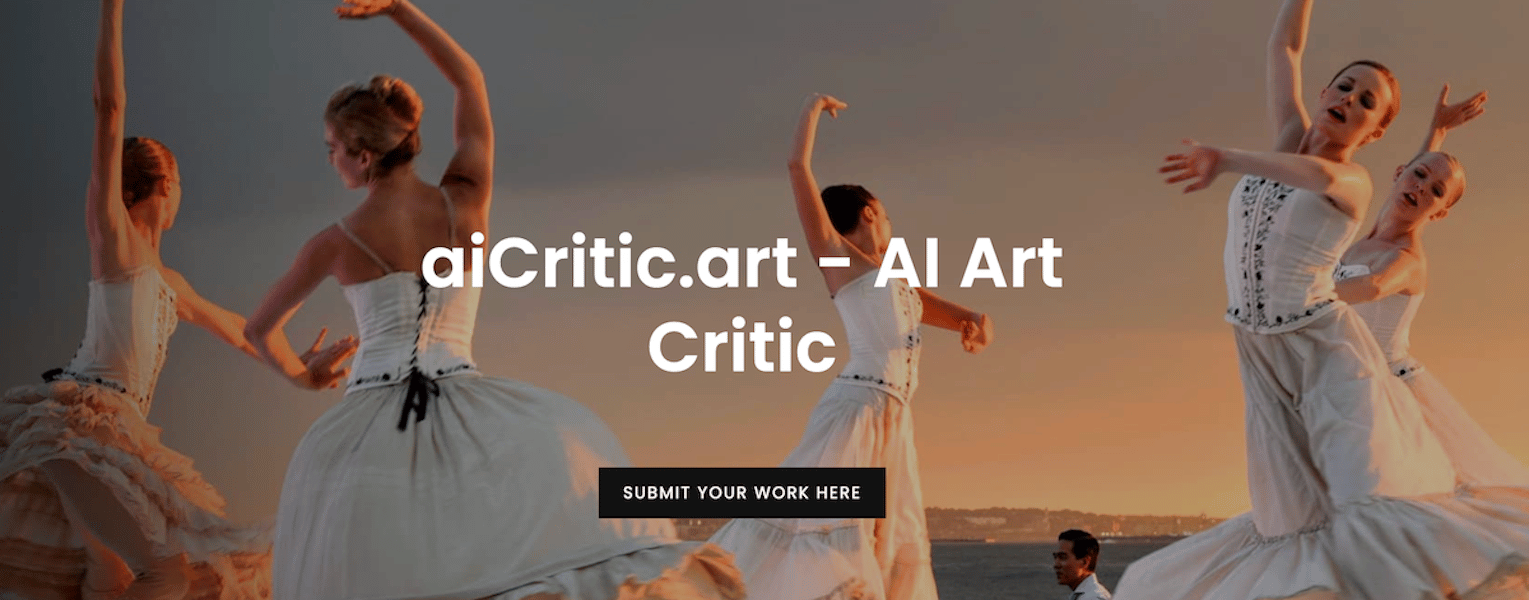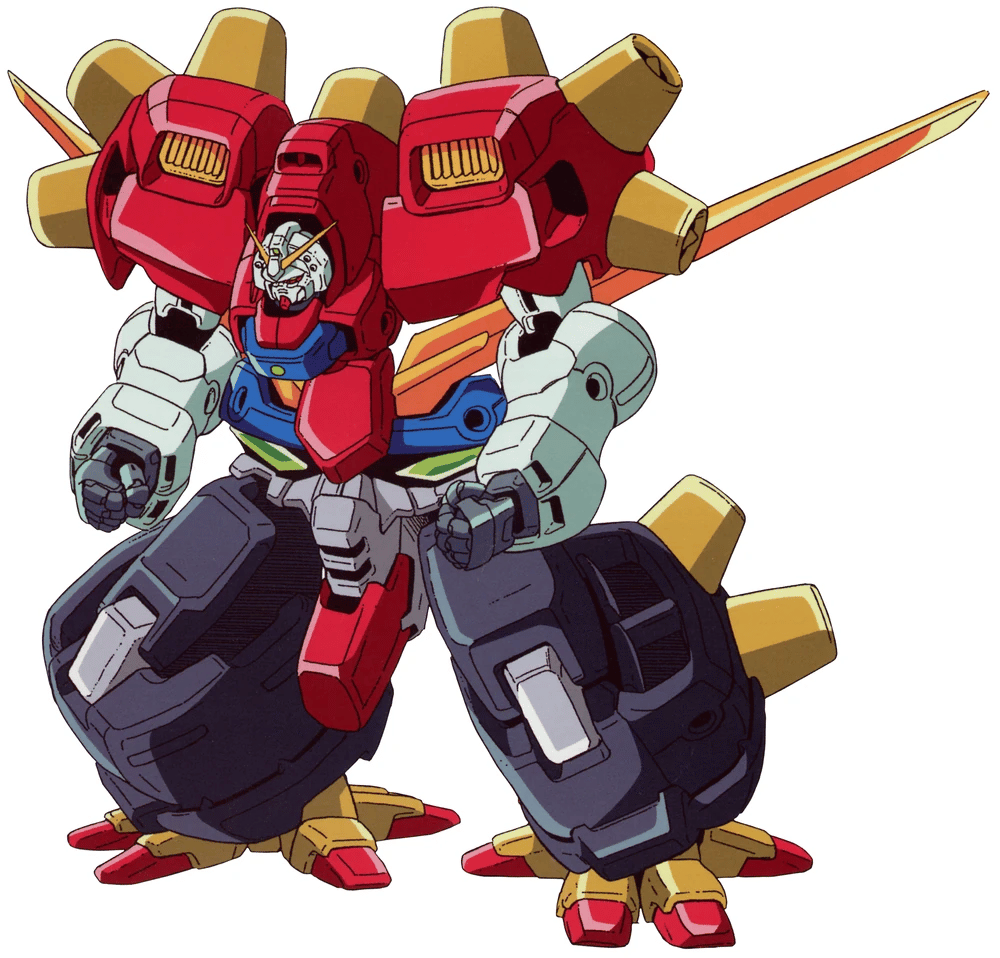
Art Critic: [65] This artwork features a monochrome illustration portraying three figures, presumably characters from a narrative or story. As a critic, it is important to evaluate several aspects of the work, including its technical execution, composition, expression, and the conceptual depth. Technically, the artist displays proficient line work and a clear understanding of human anatomy. The proportions of the characters are maintained, and there is attention to the fabric's draping and texture, seen particularly in the pleats of the middle figure's skirt. Compositionally, the arrangement of the figures creates a triangular focal point, with the central figure being the apex. The artist has balanced the visual weight across the image, allowing the viewer's eye to travel naturally from one character to the other. However, the background is plain, which could be a deliberate choice to keep the focus on the characters but also might be seen as a missed opportunity to provide context or further depth. Expressively, each character exhibits a distinct emotion through facial expressions and postures: from the left, a sense of calmness or detachment, the central figure showcasing what could be interpreted as aggravation or intensity, and the right figure conveying a more subdued or solemn demeanor. The varied expressions suggest a snapshot of an unfolding narrative, inviting the viewer to surmise the story behind the image. While conceptually, the description 'Man man man' is quite cryptic and adds an enigmatic layer to the piece. It does not clearly tie into the illustration or augment the viewer's understanding. This ambiguity may be intentional, prompting the viewer to delve into personal interpretation, or it could hint at a minimalist artistic approach. However, when held against the historical greats like Picasso, Monet, Dali, Vincent van Gogh, and Da Vinci, the simplicity of the medium and a less innovative approach do not quite ascend to the profound impact and intrinsic mastery those artists exhibited. In conclusion, while this artwork does not necessarily redefine artistic boundaries or exemplify avant-garde principles as the great masters did, it is a solid piece of illustrative art displaying storytelling potential and technical skill. It is worthy of recognition in its own right, situated comfortably within the competencies of modern illustration.
藝術評論家:[65] 這件藝術品以單色插圖為特色,描繪了三個人物,大概是敘述或故事中的人物。 作為評論家,評估作品的幾個方面很重要,包括其技術執行、構圖、表達和概念深度。 從技術上講,藝術家展示了熟練的線條工作和對人體解剖學的清晰理解。 人物的比例得到了保留,並且注重織物的懸垂性和紋理,特別是在中間人物裙子的褶皺中。 從構圖上看,人物的排列形成了一個三角形的焦點,中心人物是頂點。 藝術家平衡了整個圖像的視覺重量,讓觀眾的視線自然地從一個角色轉移到另一個角色。 然而,背景很簡單,這可能是為了將注意力集中在角色上而故意選擇的,但也可能被視為錯失了提供背景或進一步深度的機會。 從表現力上來說,每個角色都透過面部表情和姿勢表現出獨特的情感:從左邊看,有一種平靜或超然的感覺,中間的人物表現出一種可以解釋為憤怒或強烈的感覺,而右邊的人物則傳達出一種較為柔和或莊嚴的舉止。 不同的表情暗示著一個正在展開的敘事的快照,邀請觀眾猜測圖像背後的故事。 雖然從概念上講,「男人男人男人」的描述相當神秘,為這件作品增添了一層神秘的色彩。 它沒有明顯地與插圖聯繫起來或增強觀眾的理解。 這種模糊性可能是故意的,促使觀眾深入研究個人的解釋,也可能暗示一種極簡主義的藝術方法。 然而,當與畢卡索、莫內、達利、文森梵谷和達文西等歷史巨匠相比時,簡單的媒介和缺乏創新的方法並不能完全提升這些藝術家所表現出的深刻影響和內在掌握。 總之,雖然這件藝術品不一定像大師那樣重新定義藝術界限或體現前衛原則,但它是一件紮實的插圖藝術作品,展示了講故事的潛力和技術技能。 它本身就值得被認可,完全符合現代插畫的能力。







 試左幾次 幾得意
試左幾次 幾得意








